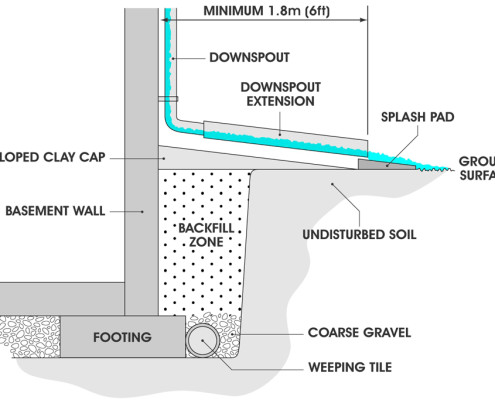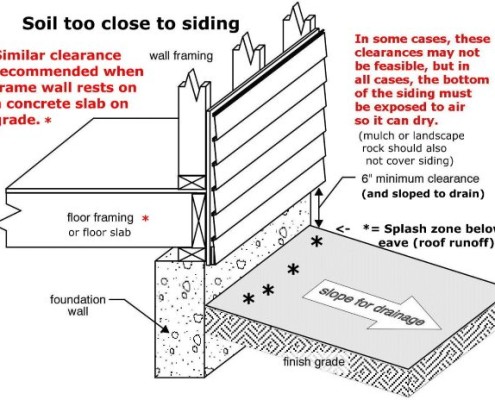How to Prevent a Leaky Basement
Let me start by saying there is no such thing as a waterproof basement.
When you build part of your house underground, there is always a chance you could get some water leaking in. Ask anyone who has lived in a home with a basement for a long time. Most have dealt with water intrusion problems at one time or another.
But just because we can’t guarantee a water-free basement does not mean you can’t finish out and enjoy your subterranean getaway. There are, however, a few things you can do to stack the odds in your favor of staying dry.
Extend Your Downspouts
Maintaining your gutters and downspouts is the single most important thing you can do to keep your basement dry. It’s also one of the most overlooked aspects I find during home inspections.
Your house displaces a lot of water when it rains. If you do not have clean, free-flowing gutters and downspouts, that water will end up against the outside basement walls, finding every nook and cranny to seep into.
Your downspouts should be extended away from the house as much as possible; a good rule of thumb is at least 6 feet away from the foundation. An extension is 99% of the battle. Most folks who have water problems in their basement have it because of improper roof water management.

Grading Around the House
Not all rainwater finds its way to the gutters.
A lot of that water lands on your yard, which means that it’s very important for that yard to be sloping away from your house.
This is called the “grading” of the ground, and it can be either positive or negative. A positive slope means the ground is running downhill, away from the house; carrying the water with it. A negative slope means the ground is running toward the house, thus sending the water against the foundation wall (where you do not want it).
This seems simple, but I inspect a huge number of houses that have improper grading. The fix is straightforward but can be difficult in certain circumstances.
If you find that you need to re-grade your yard, do what it takes to get it done right. If the grading is too high to achieve the proper slope, you’ll need to remove the high spot.
The last thing you want to do is bury your siding in the dirt. That is a great way to cause more problems. Keep the siding about 6″ from the ground.

Sump Pumps
Most homes with basements in this area have sump pumps installed. Unfortunately, just about everyone ignores their pump until it’s too late.
When was the last time you actually checked yours? You should do it every month.
I also recommend replacing the pump every 5 years or so. A good pump is only about $125 and is simple to swap out.
The aftermath of a failed pump during a heavy thunderstorm will cost you much more in dollars and in heartache. Sump pumps fall into that whole “ounce of prevention, pound of cure” category.
I won’t go into great detail about sump pumps here (that’s for another day). Just don’t forget to treat the sump pump discharge pipe like your downspouts; get it away from the house.
Keeping your basement dry is not rocket science. Just always remember that if there is a way in, water will find it. Water always wins in the end. After all, the Grand Canyon was just a ditch at one time…
Stay on top of those gutters and downspouts, get that grading right, and make sure your sump pump is in fine working condition, and chances are, you won’t find a river rushing through the grand canyon of your basement.



